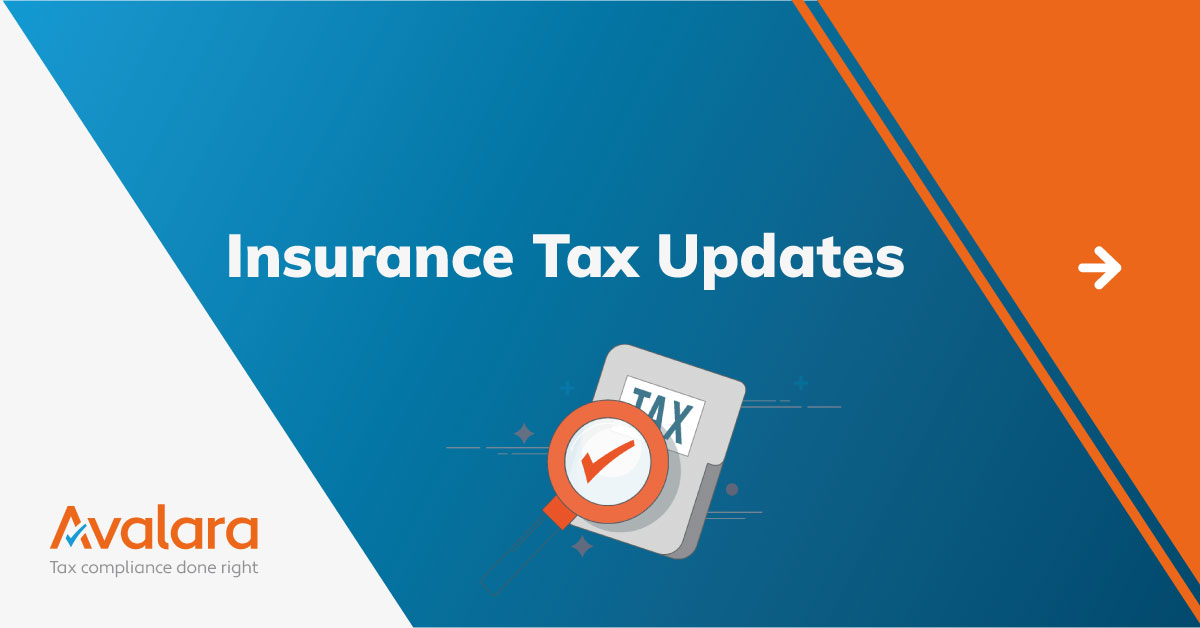How taxing could be less stressing?
How to Overcome Sales Tax Compliance Pressures
Regardless of the industry in which your clients operate, sales and use tax compliance is a complicated, complex and time-consuming process. Small- to medium-sized businesses (SMBs) especially feel the increasing sales tax pressures, as they often must balance those responsibilities along with other primary job functions.
But how can organizations overcome sales and use tax pressure? What must be done to find the right balance, ensuring that sales tax requirements are met but also that core business objectives are not overlooked? Here are key ways that you can ensure your clients can effectively face sales tax compliance challenges.
Create manageable processes with automated sales tax solutions
Sovos surveyed 250 individuals who have responsibility for sales tax compliance/management/administration at their organization, with 80% of respondents working at companies earning less than $10 million or between $10 million and $25 million in annual revenue.
Eighty-three percent of those surveyed said automating their organization’s tax management process would make them happier in their current role, and they would be more likely to stay with the company. However, just under two-thirds (62%) of respondents said their business adopted new technology or systems in the past two to three years to meet evolving sales and use tax requirements.
Manual processes might have been “how it’s been done,” but that doesn’t mean that it’s going to be enough for the continued complexity of sales tax. Economic nexus changes, expansion of e-commerce options and overall business growth can lead to long hours spent filing manually at the end of each month. Additionally, there can be limitations of tax calculation (e.g., jurisdictional granularity, customer/product taxability) through your ERP, accounting platform or e-commerce channel (e.g., NetSuite, QuickBooks Online, Shopify).
An automated sales tax solution can meet current business needs and be capable of scaling as necessary to handle future growth.
Understand and prepare for audit liability and risk
The Sovos survey also found that eight out of 10 respondents said that either triggering an audit or facing a financial penalty was their biggest fear if a mistake was made when remitting sales tax. Eighteen percent also said they worried about a manager losing confidence in them or even getting fired should they make a mistake.
Audit liability can stem from numerous areas. This can include improper tax calculation, such as misclassifying a candy bar as candy when it should be classified as food for a particular jurisdiction. Incorrect filing remittance (e.g., under or over-reporting), data transfer and reconciliation issues, and historical inaccuracies can also create a liability risk for businesses. For example, do you have a record dating back to all transactions, and what the tax was when you filed previously? Historically, a single source of record can help when an audit wants to look back three years. Additionally, jurisdictions can audit back up to six or seven years if an organization failed to submit sales tax returns.
This is why sales tax compliance is key. Your clients must understand sales tax calculation and filing requirements. For sales tax calculation, there are constant regulatory changes across jurisdictional levels and there can be a lack of granularity into local jurisdictions. There are also exempt sales to consider, along with sales tax holidays.
Sales tax filing requirements will involve constantly changing state and local tax forms, as well as complexities like negative returns and credits on hold. Businesses should also ensure accuracy in reporting, their historical accuracy and that overall visibility into the filing process is understood.
Find scalable options that continuously meet growing complexities
Sovos found that 35% of respondents said the growing complexity of sales tax distracts from core business priorities. Over half reported that their organization saw a strain on IT and other resources, with 13% noting a stressful workplace and even employee churn.
Your clients need to consider tax as early as possible to better understand how their business growth correlates with sales tax complexities. This includes expanding into new states and jurisdictions with unique tax rates and exemptions on certain products or for particular industries. If they don’t have the in-house resources to keep up with that rapid change, it can be a daunting undertaking and lead to greater audit liability.
The filing process itself can also be more complex as businesses grow or add more products. New states and jurisdictions will have different forms, with their own filing deadlines. Do your clients have a system to keep track of those form updates? Even the reporting and submission process (e.g., online v. paper mailed in) could be different.
The expansion or creation of an online marketplace can also have an impact. This is especially true with retailers that are working to keep pace with digital-only sellers. You might be based in one state, but if you’re selling online into another, there are going to be economic nexus considerations.
Sales tax pressures are not likely to disappear anytime soon, but there are necessary steps to ease the burden. Ensure your clients are properly leveraging their ERP or accounting platform for basic tax rates and rules for simple tax calculation. Additionally, implementing a third-party tax provider can provide greater protection and help automate their tax processes. Check out with our experts to learn more about increasing efficiency in your approach to sales tax.
Building a business case for e-invoicing

E-invoicing is a change that most companies will need to embrace, either now or in the near future. But, it’s not always easy convincing stakeholders that the investment is worth the payoff, particularly in today’s post-lockdown environment.
Going back to basics, a compelling business case is one where you can justify the costs of an initiative, demonstrating that it will result in a positive return on investment (ROI). As e-invoicing is a relatively new domain for many businesses, it can be challenging to overcome the concerns of budget-conscious stakeholders.
In this article, we take inspiration from our eBook How to Successfully Implement an E-invoicing Solution to discuss how businesses can tackle the challenges of e-invoicing adoption and get the relevant stakeholders on board.
Obstacles preventing companies from adopting e-invoicing
Some companies may view e-invoicing with trepidation for several reasons. But often these concerns can be overcome when looking at the benefits of adopting e-invoicing and choosing a flexible solution.
Below, we’ve outlined some of the main challenges preventing businesses from making the switch to e-invoicing – along with solutions to overcome them:
- Complex legal requirements. E-invoicing regulations aren’t straightforward. The country-to-country variations can cause a compliance nightmare for global businesses if they don’t have the right solution. However, robust e-invoicing software can cut out the bureaucracy and ensure compliance in just a few clicks.
- Large-scale change. E-invoicing affects more than just the finance department. Implementing e-invoicing will likely require an update on how transactions are handled throughout the supply chain. Effective change management is, therefore, essential. Otherwise, the switch to e-invoicing could overwhelm businesses with departments in various stages of technological advancement.
- Lack of budget. In today’s economic climate, a lack of budget will be a common barrier to e-invoicing adoption – particularly for those choosing to tackle it internally. Outsourcing to an expert will require an initial investment, but a company can quickly achieve significant savings compared to using paper invoices. Plus, they will earn back time and free up staff for higher-value tasks, thanks to process automation.
- Divergent requirements of trading partners. If no mandatory e-invoicing rules exist, trading partners may have different requirements regarding e-invoicing formats, methods and processes, which can turn stakeholders off the idea. But, outsourcing e-invoicing to a proven expert can provide the assurance they need to get on board. Third-party specialists will have the capability to address all sizes of trading partners with independent requirements seamlessly.
Building a business case for e-invoicing
Here’s a summary of the key steps involved in building a compelling business case for e-invoicing.
Step 1: Detail current state and desired future state
To analyse the current state, describe the processes currently in place, highlighting the major pain points and key issues that affect the organisation and AP/AR stakeholders. By doing so, you can establish a baseline for operations that will help determine the organisational readiness for digital AP/AR transformation.
Determining the desired future state involves determining gaps in existing capabilities based on your current state analysis and creating a set of proposed changes necessary to attain the desired future state. When determining the formal requirements for the project, you must include the desired functional specifications, technical considerations and relevant needs such as training and budget.
Step 2: Set realistic KPI’s
No initiative can be successful if success itself is not defined. KPIs enable businesses to track progress, but they only work when they’re realistic, measurable and precise. For instance, a core KPI for e-invoicing adoption could be the time saved on manual processes by AP staff. Try to relate your KPIs to the company’s overall vision to further bolster your business case.
Step 3: Build a logical argument for e-invoicing
The potential ROI of an effective e-invoicing solution will likely dissipate any doubt lingering in the minds of stakeholders at this stage. Consider weaving the following benefits into your business case to boost confidence in e-invoicing:
- Data quality. By removing the need for human interaction, e-invoices can’t be tarnished by human error. Instead, the data captured is accurate, structured and accessible, minimising the risk of non-compliance while expediting payments.
- Efficiency. Manual invoice processing is a time-consuming, tedious process for AP staff. Businesses free up valuable time, assigning employees to more high-value tasks through e-invoicing.
- The environmental aspect. By removing unnecessary paper waste from the back office, businesses can advance towards their ESG targets and lower their carbon footprint. In an increasingly eco-conscious world, the environmental benefits of e-invoicing could be a game-changer for companies that are still on the fence.
Step 4: Communicate the scope and timeline for approval
Although there’s no end date for any digital transformation project, it’s essential that stakeholders have a timeline to follow progress and ensure that the investment was a worthwhile one.
For example, you can determine the various stages of the company-wide e-invoicing rollout, when you expect to see results and when the business should reassess the situation if the ROI isn’t what was hoped. In the last instance, you must present a clear plan to pivot to provide stakeholders with reassurance should the worst happen.
Download our eBook to make your e-invoicing project a success
Setting up any new system for the first time can be a challenge. It’s not just the initial installation of software or training staff, but the continued smooth running of processes after that.
E-invoicing will be new territory for many AP/AR departments. A clear implementation plan is therefore required to make the switch to electronic invoice processing as smooth as possible for everyone involved.
Latest insurance tax changes in Poland, France and Alberta

Below is a summary of the latest Insurance Tax changes in Poland, France and Alberta
France
Tax Rate
France – National Health Insurance Fund exceptional contribution discontinued
Tax types
- Caisse nationale de l’assurance maladie
Products
- Group Health
- Private Health
- Accident & Health
Summary
It appears that the exceptional contribution on supplementary health insurance premiums, levied to combat the financial impact of the COVID-19 pandemic, has been discontinued in France following two years of implementation.
Applying since January 1, 2020, the French government imposed an exceptional contribution exclusively on supplementary health insurance premiums. The exceptional contribution was set at a rate of 2.60% for the year of 2020 and 1.30% for the year of 2021. Funds raised from this contribution were allocated to the National Health Insurance Fund.
There were initially discussions to increase the rate for the exceptional contribution in 2022, however, the proposal of raising the rate has been rejected. In addition to this, the Social Security Financing Bill for 2022 does not indicate that the 1.30% rate for 2021 will continue to be levied, therefore it appears that the exceptional contribution will not be levied on supplementary health insurance premiums for the year of 2022 and onwards.
Get the latest IPT news and tax rate changes sent directly to your inbox.
Poland
Tax Rate
Increase of Supervisory Levy (Ombudsman) rates for 2022
Tax types
- Supervisory levy (Ombudsman)
Products
- Multiple Products Effected – See summary
Summary
Insurers paying the Polish Supervisory Levy (Ombudsman) are reminded that the payment for Quarter One, 2022 is due and the rate has increased. Applicable from January 1, 2022, the rates are as follows:
- Up to 0.023% of gross premiums for domestic insurance companies
- Up to 0.025% of gross premiums for foreign insurance companies
The previous rate, applicable from January 1, 2020 to December 31, 2021, was up to 0.0184% for domestic insurance companies, and for foreign insurance companies, a rate of up to 0.02%.
EEA insurers operating a branch in Poland through Freedom of Establishment (FOE) are subject to the domestic insurance company rate. If an EEA insurer does not have a branch and conducts Polish business through Freedom of Services (FOS), the foreign insurance company rate applies. For foreign insurance companies, the amount is calculated based on gross premiums for insurance contracts concluded in connection with the performance of insurance activities in Poland.
Changes have been updated on the Avalara IPT Lookup and Tax Calculator.
Canada – Alberta
Tax Rate
Canada: Alberta – Release of Circular CT-21R5 on Insurance Premium Tax
Tax types
- Insurance premium tax
Summary
The Alberta Tax and Revenue Administration has recently published Circular CT-21R5. This information circular provides an overview of Insurance Premium Tax in Alberta and highlights legislation originally outlined in the Alberta Corporate Tax Act.
The circular confirms the following tax rates:
- 3% for contracts of accident, sickness, and life insurance
- 4% for all other taxable contracts of insurance
Insurance Premium Tax is not payable on life insurance when amounts receivable are considered an annuity contract, contracts of marine insurance with the exception of insurance of pleasure crafts, premiums that an insurer does not receive under a risk distribution program, and reinsurance.
As emphasised in our previous News Alert, published on January 14, 2022, IPT must be filed electronically through the Tax Revenue Administration Client Self-Service (TRACS) online portal, on or before the 75th day following the end of the insurer’s taxation year. Supporting documents are not required to be submitted at the stage of an IPT return, but they must be retained by the insurer to be provided upon request by the authority.
If you have any questions or comments regarding these insurance tax alerts, please do not hesitate to get in touch.
Read our latest whitepaper: The Digitalisation of the Insurance Tax Landscape
What’s inside:
- The race to digitalisation in the insurance industry
- Data digitisation and the impact on IPT
- Current state of IPT across the world
- The outlook for captive insurers
- IPT compliance under the microscope
- The boom in insurtechs


















